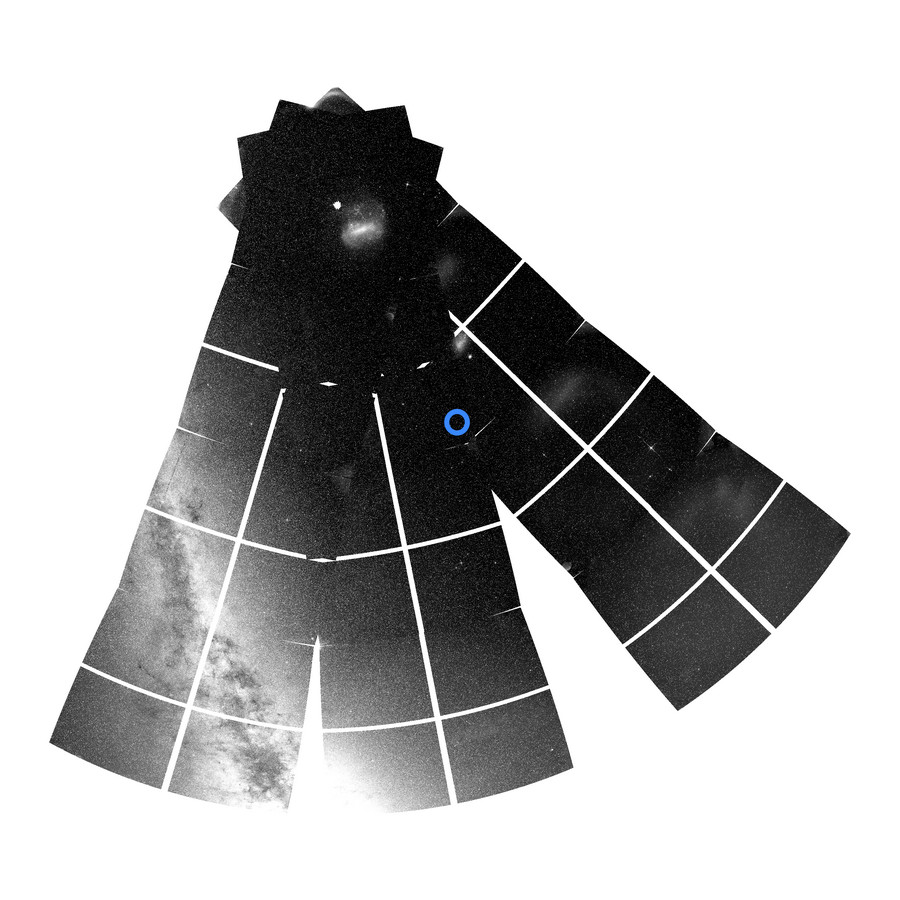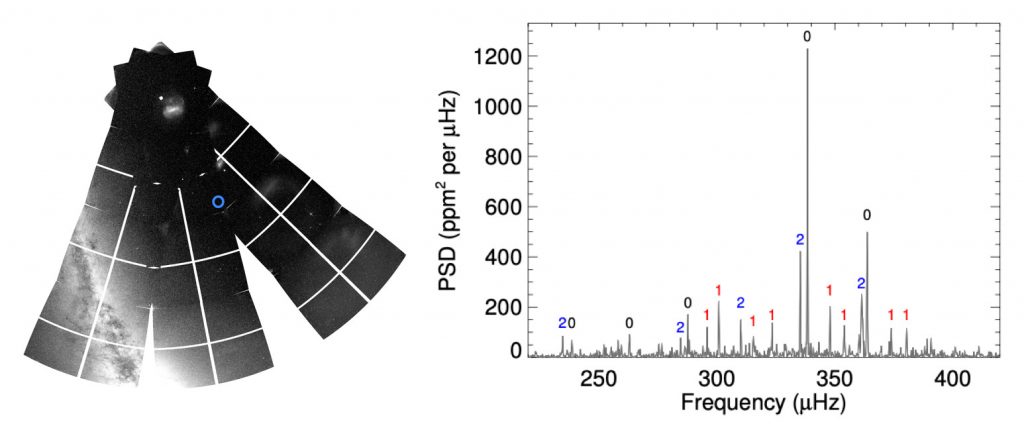A collision of the Milky Way with a small galaxy accurately dated by the study of the star ν Indi
ν Indi is a bright star (visual magnitude mv = 5.3) visible with the naked-eye from the southern hemisphere. By using ground data (ESO telescopes), space data (Gaia and Tess missions) and by combining very diverse spectroscopic, astrometric, kinematic or asteroseismological information, an international team including two researchers from the Department of Astrophysics / AIM Laboratory of CEA-Saclay was able to determine the epoch, between 11.6 and 13.2 billion years ago, of a collision between our galaxy and a small dwarf galaxy, Gaia-Enceladus. This work is published in the journal Nature Astronomy, January 2020.

Start of investigation
This result is based on a detailed study of the properties of the star, using informations from ground and space observatories. Extremely fine spectroscopic data (obtained at ESO with the 3.6m and 2.2m telescopes) allowed to measure the chemical composition of the star, whose elements are by their presence and abundance tracers of the life of the star and its environment. They provide relevant information on its history leading here in two hypotheses: ν Indi is born in the Milky Way or belongs to the galaxy Gaia-Enceladus. This ambiguity has been resolved by analyzing the star's motion, possible thanks to the data collected by the Gaia telescope. Gaia is an ESA space mission launched in 2013 and dedicated to the very precise measurement of the position, distance and motion of stars in the Galaxy.

Asteroseismology and dating a collision
Finally, the precise determination of the age of the star completed this survey. This was made possible by the study of the oscillation modes of ν Indi (asteroseismology) using data collected by NASA's TESS mission (Transiting Exoplanet Survey Satellite). TESS, launched in 2018, scans almost the entire sky in search of planets orbiting stars. At the same time, these observations make it possible to study the properties of the star around which potential planets orbit. Analysis of the TESS data has thus made it possible to constrain the age of the star and determine that it was born within and at the beginning of the life of the Milky Way, 11.5 billion years ago, but that the collision with the Gaia-Enceladus galaxy had significantly affected its trajectory in the Milky Way. Determining the age of the star makes it possible to define an upper limit on the date of the Milky Way/Gaia-Enceladus collision, which researchers estimate to be between 11.6 and 13.2 billion years ago.
This work, published in the journal Nature Astronomy, shows the potential of the combination of multiple studies, both for the understanding of stars and for the understanding of the history of the Galaxy.
Contact : Lisa Bugnet,Rafael Garcia
Publication :
– « Age dating of an early Milky Way merger via asteroseismology of the naked-eye star ν Indi “
William J. Chaplin et al., New Astronomy, 13 January 2020
See also : le press release from the University of Birmingham
Rédaction : Lisa Bugnet, Rafael Garcia, C. Gouifffès


